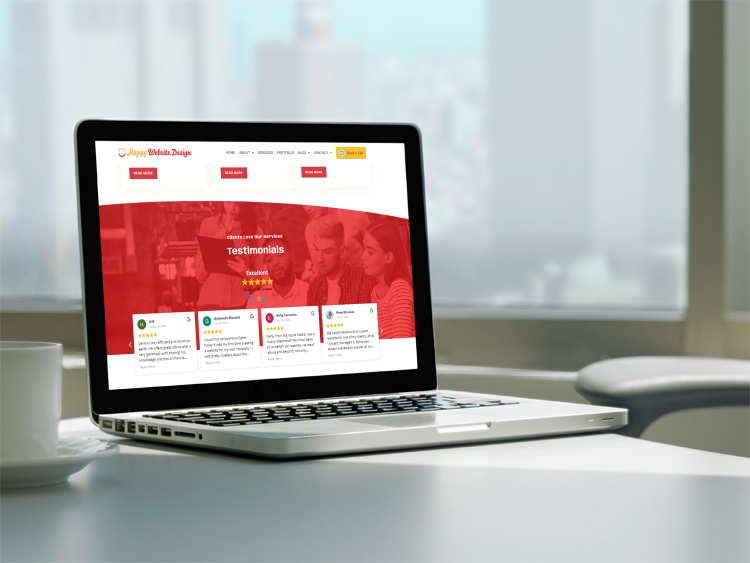Why Holistic Website Design Is the Trick to a Seamless Customer Experience
In today's digital landscape, the importance of all natural internet style can not be overstated, as it delicately weaves with each other aesthetic appeals, usability, and performance to create a smooth customer experience. By embracing a comprehensive method that prioritizes customer needs and leverages feedback, developers can enhance the general interaction with their platforms.
Comprehending All Natural Internet Layout

Incorporating user responses and behavior information is necessary in all natural website design. This iterative procedure aids designers to identify pain points and areas for renovation, making sure that the final product resonates with customers. Alternative layout highlights the importance of availability, guaranteeing that all users, no matter of their abilities, can browse and communicate with the web site properly.
Furthermore, the combination of receptive style concepts is crucial in suiting various tools and screen sizes, further enhancing the individual experience. By comprehending the interconnectedness of these elements, designers can create web sites that not only attract yet additionally maintain individuals, eventually driving engagement and conversions. Alternative website design is, consequently, a critical technique that fosters a significant partnership between customers and digital areas, leading the means for lasting on the internet success.
Trick Elements of Holistic Design

One more essential element is uniformity in visual and useful facets across the website. This includes preserving a natural color combination, typography, and layout, which aids individuals navigate the site with ease - happy web design. In addition, responsive layout is important, ensuring that the web site performs optimally throughout various devices and screen sizes
Access is additionally an essential part of all natural style. By sticking to availability criteria, designers can develop comprehensive experiences that provide to diverse customer groups, including those with specials needs. The combination of material technique guarantees that beneficial information is offered clearly and succinctly, enhancing comprehension and interaction.
Last but not least, effective partnership amongst design, advancement, and advertising and marketing groups fosters a unified vision that aligns with organization objectives. By concentrating on these key components, holistic website design can deliver an improving customer experience that is both interesting and functional.
Benefits of a Seamless Experience
Creating a smooth customer experience uses many benefits that dramatically enhance total complete satisfaction and interaction. At its core, a smooth experience fosters a feeling of simplicity and intuitiveness, allowing customers to navigate an internet site or application easily. This decrease in my explanation friction not only increases the possibility of customers returning however likewise boosts their desire to advise the platform to others.
Additionally, a smooth experience brings about boosted conversion rates. When customers locate what they need with marginal effort, they are much more likely to complete wanted actions, the original source such as buying or enrolling in a newsletter. This efficiency converts right into higher consumer retention, as completely satisfied users are most likely to come to be devoted advocates for the brand name.
Additionally, a natural and smooth interface lessens cognitive load, permitting customers to concentrate on content instead than dealing with navigating or design incongruities. This clearness not only boosts customer satisfaction however also strengthens brand trustworthiness. Ultimately, prioritizing a seamless customer experience results in an affordable advantage, as companies that purchase this element are much better positioned to satisfy the evolving expectations of their target market and drive lasting success.
Implementing All Natural Strategies
To accomplish a genuinely smooth individual experience, organizations need to embrace holistic approaches that take into consideration every element of design and functionality. This technique starts with a combined vision that aligns employee throughout numerous self-controls, including UX/UI layout, web content growth, and technical execution. Reliable partnership promotes a shared understanding of customer requirements and purposes, allowing for more coherent layout choices.
Next, it is vital to produce customer personalities and journey maps that mirror the diverse demographics and behaviors of the target audience. By feeling sorry for customers' point of views, companies can anticipate difficulties and enhance interactions throughout the digital experience.

Additionally, consistent branding and messaging should permeate every touchpoint, guaranteeing a recognizable and credible visibility that enhances user involvement. Integrating responsive design principles is likewise vital, as users now communicate with content throughout multiple devices.
In addition, organizations need to focus on availability, ensuring that all customers, no matter ability, can browse and gain from their digital offerings. By embedding these holistic approaches into the layout process, organizations can create a cohesive and enjoyable customer experience that advertises complete satisfaction and commitment.
Measuring Individual Experience Success
While accomplishing an alternative strategy to web layout is crucial, measuring individual experience success is equally important to guarantee that layout techniques effectively meet individual requirements. This needs a mix of qualitative and quantitative metrics to get a thorough understanding of individual communications and fulfillment degrees.
Secret performance indications (KPIs) such as user engagement, conversion rates, and bounce prices give valuable measurable insights. For instance, a high conversion rate might show that customers discover the layout user-friendly and engaging. Conversely, raised bounce prices can indicate that users are disgruntled or confused, necessitating a reevaluation of the layout elements.
Qualitative procedures, consisting of individual feedback, surveys, and use testing, are critical for obtaining deeper insights into the customer experience. Evaluating individual comments can reveal discomfort factors and locations for enhancement, while functionality examinations permit developers to observe real-time interactions and identify challenges individuals encounter.
Ultimately, the assimilation of these dimension strategies enables constant refinement of website design, ensuring it remains user-centered and effective in providing a smooth experience (happy web design). Frequently look at more info taking another look at these metrics will allow designers to adjust to advancing individual demands and choices, solidifying the general success of an all natural internet layout technique
Conclusion
In final thought, alternative web layout becomes a basic method to achieving a seamless individual experience. By integrating looks, performance, and use, this style philosophy addresses diverse individual needs and preferences. The emphasis on user-centered strategies not just boosts navigating and contentment but also fosters brand trustworthiness and availability. Inevitably, the application of alternative layout principles dramatically contributes to improved conversion rates and client retention, establishing a durable structure for efficient digital interactions.